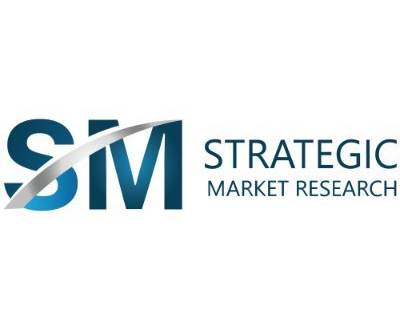DNA sequencing actually refers to some of the general laboratory techniques for determining the exact sequence of bases or nucleotides present in the DNA molecule. The sequencing of the bases (that are often referred to by the first letters of their respective chemical names: A, C, T, & G) encodes the biological information that the cells use to develop &operate. The World DNA sequencing market in 2020 summed at around USD 9 billion. The DNA sequencing market growth is anticipated to surpass a mammoth USD 44 billion in 2030, along with a CAGR of 17.12%.
DNA sequencing accurately determines the different sequences of bases {cytosine (C), adenine (A), thymine (T), and guanine (G)} in a DNA molecule. A sample that has the DNA to be sequenced is prepared. The target sequence is then amplified by means of the PCR or polymerase chain reaction. The amplicons are then obtained & purified thoroughly, followed by the suitable preparations for the sequencing of the DNA. The DNA after that is sequenced for the extraction of the required data, which is then analysed in all respects. Moreover, it has been declared by the National Human Genome Research Institute (NHGRI) that all Homo sapiens are 99.9% identical in their overall genetic makeup. The remaining 0.1% is studied using DNA sequencing for the determination of the causes of the diseases. This technique has some of the most extensive applications in the field of molecular biology, metagenomics, evolutionary biology, medicine, virology, & forensic investigations.
There are generally 3 types of DNA sequencing that are in huge demand all over the market worldwide: They are
- Whole-genome sequencing
- Whole exome sequencing
- Targeted sequencing
a.) Whole-genome sequencing
Whole-genome sequencing, also widely known as full genome sequencing / complete genome sequencing/entire genome sequencing, is regarded as the process of determining the entirety, or nearly the entirety, of the respective DNA sequencing of an organism’s genome at a time.
The WGS or Whole-genome sequencing accurately reveals the complete DNA structure of an organism, thus enabling us to understand the variations both within & between the various species. This, in turn, allows us in differentiating between the organisms with a precision that the other technologies will not allow under any circumstances.
b.) Whole-exome sequencing or WES
Exome sequencing, also popularly known as whole-exome sequencing, is regarded as a genomic technique for sequencing all of the protein-coding regions of the genes that are present in a genome.
The sole aim of the whole-exome sequencing is trying to find a genetic cause of the child’s signs & symptoms. Most of the people who have WES have already had some sort of genetic testing. WES is also regarded as one of the most extensive genetic tests available in the market till date.
c.) The phenomenon of Targeted sequencing
Targeted sequencing is regarded as one of the rapid & cost-effective ways to detect known & novel variants in the selected sets of genomic regions or genes. Gene sequencing can be accomplished easily by using various sorts of DNA sequencing methods, depending on the respective scale.
Some of the widely used devices for DNA sequencing:
a.) 3500 Genetic Analyzer (GA)
The 8-capillary 3500 Genetic Analyzer was created with the unmatched application diversity that life science researchers have come to anticipate, while also supporting the rigorous performance requirements of validated and process controlled environments.
A Dell workstation and monitor, an 8-capillary instrument, 3500 Series Data Collection Software, reagent kits for system certification, and software for secondary analysis are all included in this package. Sequencing and fragment analysis are supported by the 3500 Series Data Collection Tools, which also seamlessly interfaces with downstream software for secondary study of genetic data. Software for resequencing applications and software for fragment analysis, GeneMapper, are both included in this bundle.
Adequate & Reliable Quality Data
The signal consistency from instrument to instrument, run to run, and capillary to capillary is considerably improved by the 3500 series systems. These methods significantly reduce the range of signal peak heights achieved across several 3500 series instruments thanks to a mix of clever hardware, a potent new algorithm, and reagent combinations.
Ready to Use Consumables integrated with RFID Tags
With pre-packaged polymer pouches, anode & Cathode buffer containers, and simple-to-install capillary arrays, the 3500 series delivers consumables that are ready to use. Each of these consumables has an RFID tag incorporated into it, allowing the 3500 Series Data Collection Software to see, track, and report on vital details about reagents and consumables like usage, lot number, part number, expiration date, and on-instrument lifetime.
The usage of Data Collections Software
With an intuitive dashboard design, & the highly visible buttons for routine tasks, simple-to-read graphical displays to monitor the state of consumables, and practical maintenance schedule calendar capabilities, 3500 Series Data Collection software breaks new ground in user-friendly navigation. Simplified plate setup and built-in primary analysis with quality control are two examples of new capabilities that enable you to judge the data’s accuracy as it is created on the instrument without transferring output files into separate software programmes for secondary analysis.DNA sequencing has brought a change in outlook in the proteomic and genomic research as exceptionally exact and high-throughput innovation is utilized for different applications, for example, once more get together, WGS, and DNA resequencing. Consequently, this innovation is promptly taken on in a few scholastic examination foundations for research studies. Illumina introduced NovaSeq 6000 Sequencing System at the Whitehead Institute for Biomedical Research, Massachusetts, the U.S., in June 2020.
b.) The (ITGIS) or Ion Torrent Genexus Integrated Sequencer
The Ion Torrent Genexus System, the first turnkey next-generation sequencing (NGS) solution that automates the specimen-to-report workflow and can produce findings in a single day, includes the Ion Torrent Genexus Integrated Sequencer.
Starting with purified and measured nucleic acid, the Genexus Integrated Sequencer automates every step of the focused NGS procedure. The Genexus sequencer automates NGS library preparation (including cDNA synthesis), template preparation, sequencing, primary data analysis, and variation reporting for DNA, RNA, and cfTNA applications with a single touchpoint and five minutes of hands-on time. The Ion Torrent GX5 Chip, a four-lane semiconductor chip, is used for sequencing on the Genexus sequencer. Depending on the required throughput, the GX5 Chip’s four lanes can each handle an output of 12–15 million reads and can be used individually or collectively. Ion Torrent Genexus Software integrates the setup-to-report workflow inside a single software environment to expedite the NGS workflow.
CONCLUSION
Thus with the advent of the above-mentioned technologies, the market of DNA sequencing is expected to prosper at an exponential rate in the future.
 Posting Point
Posting Point

